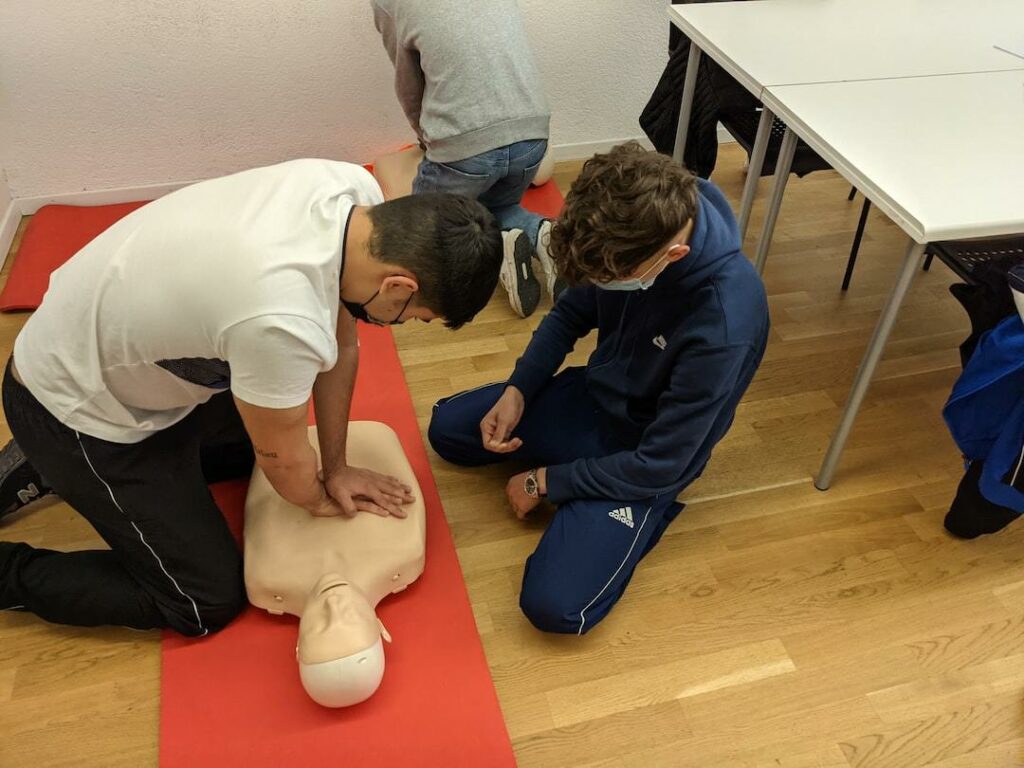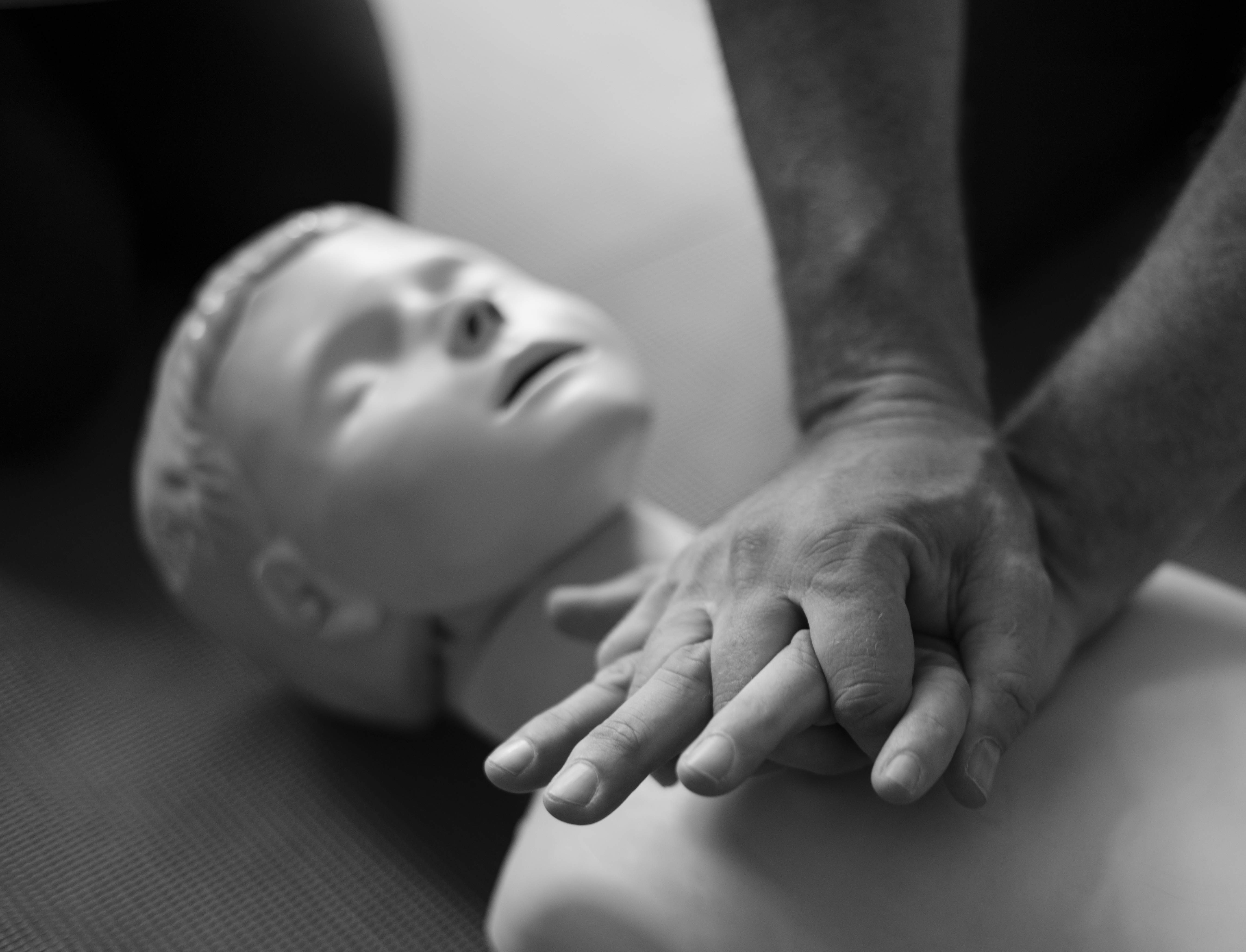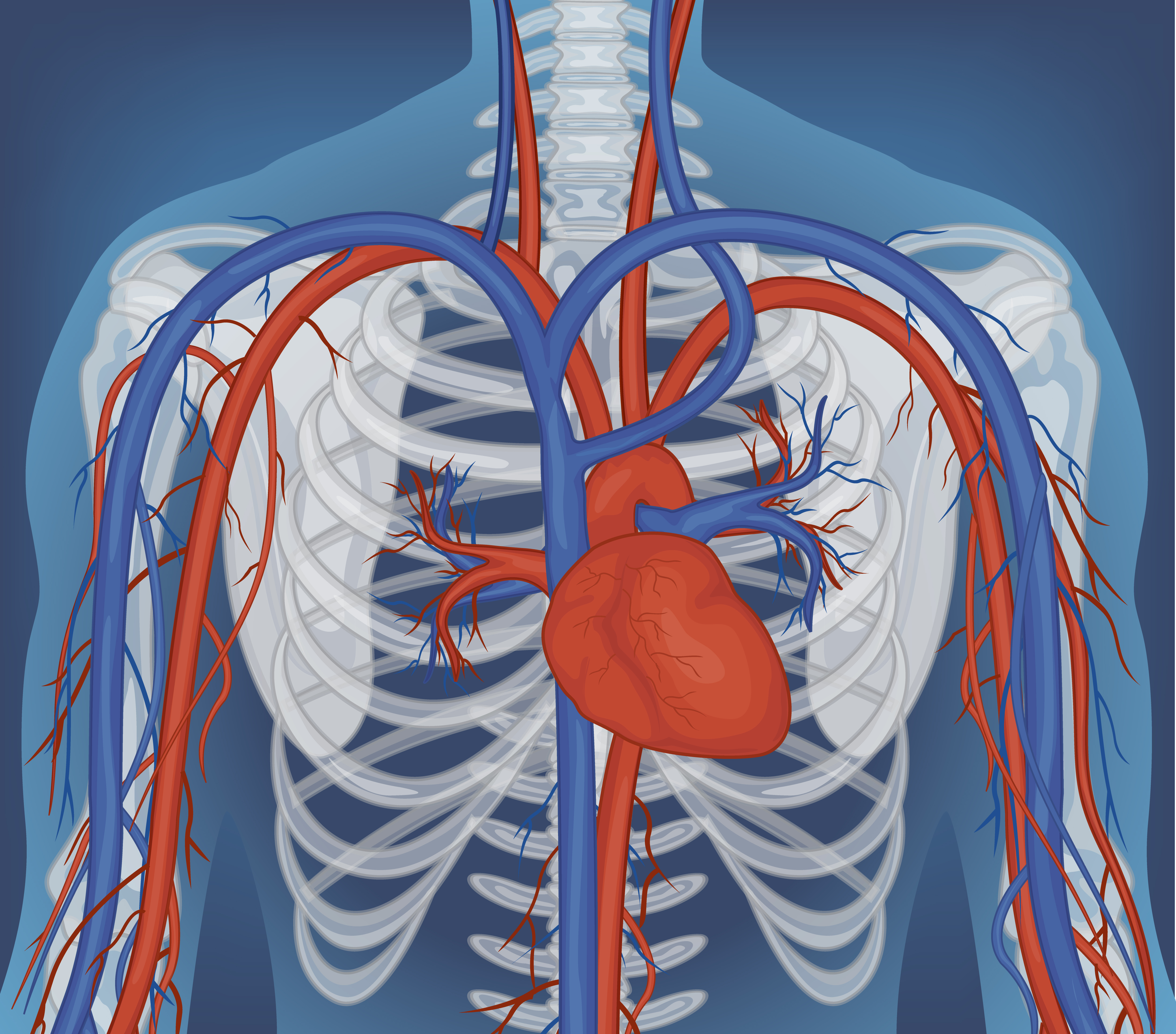
Get CPR training for your team!
If you have any questions feel free to email us at info@emccprtraining.com
CONTACT ONE OF OUR EXPERTS HERE

Last Updated on January 28, 2024 by CPR Training
It’s an unfortunate reality that emergencies can strike anywhere, anytime. What if you could be a hero in an urgent crisis? Knowing CPR or Cardiopulmonary Resuscitation and how to perform it effectively could make all the difference.
This crucial skill set empowers ordinary individuals like us to step up as lifesavers during dire circumstances when every second counts. From cardiac arrest care on sidewalks and offices to rescue breaths at home or public transport – your knowledge of CPR steps might be what keeps someone alive until medical professionals arrive.
CPR, you’re not just getting blood moving around the body. You’re also helping to circulate oxygenated blood to vital organs. This action can delay brain damage and extend the window for successful resuscitation once paramedics arrive on the scene.
That’s why it’s so crucial that everyone learns this emergency lifesaving procedure – with CPR under your belt, you could be someone’s last hope in a life-or-death situation.

CPR, or Cardiopulmonary Resuscitation, is a lifesaving technique employed when the heart stops beating to provide an emergency bridge of blood circulation until medical help arrives. It acts as an emergency bridge that keeps the blood moving until paramedics arrive. What’s the point of CPR? It helps circulate oxygenated blood throughout the body to vital organs and can prevent permanent brain damage.
The American Heart Association has stressed that starting CPR immediately after cardiac arrest doubles or triple the chances of survival. It makes us realize the critical time for CPR to begin immediately. When performing chest compressions and rescue breaths in proper rhythm (CPR steps), we mimic how our heart functions naturally.
If you’re not a medical professional but come across a person experiencing cardiac arrest, don’t panic. Just remember two simple steps: Call 911 and start hands-only CPR if trained; otherwise, get guidance from the 911 operator. The bystander’s role becomes crucial here because every minute counts.
To perform chest compressions correctly, position your hands at the center of the patient’s chest and push hard and fast about 100-120 times per minute, allowing full recoil between each compression. For rescue breathing, ensure you see their chest rise with each breath, indicating effective ventilation.
We already discussed that immediate initiation of this emergency lifesaving procedure significantly improves survival rates post-cardiac arrest care by keeping blood flow active within the victim’s body until further help arrives. But did you know that nearly 350,000 people die from sudden cardiac arrest annually in the US? Such stats make it more imperative to learn CPR through online classes or onsite group training.
Knowing CPR and how to administer it correctly can be the difference between life and death, so don’t delay – get certified now. Don’t hesitate – get trained and certified today.
Important Takeaway:
Life-Saving Know-How: CPR, or Cardiopulmonary Resuscitation, is a crucial skill that can save lives when someone’s heart stops beating. It keeps the blood flowing and oxygen circulating to vital organs until more help arrives. Starting it right away doubles survival chances. So learn these two simple steps: Call 911 and apply chest compressions immediately while waiting for professional medical aid.

Immediate CPR can double or triple the chances of survival after cardiac arrest by maintaining blood flow to the brain and heart until further help arrives.
To properly administer CPR, one must understand both the chest compression and rescue breathing components. Chest compressions are designed to mimic a heartbeat by physically pushing down on the chest at a steady rhythm. This helps circulate oxygenated blood when someone’s heart has stopped.
In addition, rescue breaths give oxygen directly into the lungs of a person experiencing cardiac arrest. When medical professionals arrive, it ensures enough oxygen in their system for vital organs.
These steps should be performed as soon as possible after recognizing signs of cardiac arrest – every minute counts. Consider taking online CPR training courses to get certified in performing these lifesaving skills effectively.
The significance of starting CPR immediately cannot be understated – time lost equates directly with decreased survival rates. Each year sees half a million cases of cardiac arrests; immediate response not only improves patient outcomes but also prevents permanent brain damage due to lack of sufficient blood flow.
This urgency makes knowledge about how and when to use these techniques paramount amongst laypersons who may be first responders in emergency situations such as sudden collapse or unresponsiveness where paramedics have yet to arrive.
American Red Cross suggests that initiating CPR within the first two minutes of cardiac arrest can double or triple a victim’s chance of survival. Equipping oneself with CPR skills can be the difference between life and death for someone in cardiac arrest, thus making certification in emergency preparedness a worthy endeavor.
Equip yourself with these lifesaving skills today. Whether through hands-on or online courses, getting certified in emergency preparedness is worthwhile. Don’t wait. Start your journey now.
Important Takeaway:
Of a cardiac arrest, the better the chances are for survival. It’s all about quick action and applying what you’ve learned. Don’t hesitate to use your skills if needed – they can make a real difference.
Workplace safety is a significant concern for all businesses. A vital part of workplace safety is ensuring personnel possess the abilities and understanding to act swiftly in emergencies, like when a colleague goes into cardiac arrest. This is where onsite CPR training comes into play.
Certified employees are an asset to any workplace. By having certified personnel to carry out CPR it could be the difference between life and death when a critical situation happens before professional medical aid can arrive. But why does it matter so much?
Bystander CPR has been shown to double or even triple the chances of survival after cardiac arrest – an event that claims over 350,000 lives each year in the United States alone.
A staff member trained in performing chest compressions and rescue breaths not only brings value but also fosters a safer work environment because they know what actions need to be taken when someone’s heart stops beating suddenly.
In emergencies like these, time plays a pivotal role. The faster one starts administering lifesaving procedures like chest compressions and rescue breathing, known collectively as CPR, the better the victim’s chances are at surviving without suffering permanent brain damage due to lack of oxygenated blood flow.
Hence, having trained personnel on-site who understand how critical every second is post-cardiac arrest helps reduce response times drastically. This could be the difference between life and death.
Moreover, CPR-trained employees are more likely to respond confidently during an emergency rather than panicking or freezing up. They can start CPR immediately while waiting for paramedics to arrive, which can keep blood moving around the body of a person experiencing cardiac arrest – buying them precious time.
In essence, onsite training equips employees with lifesaving skills that they carry everywhere—not just at work—potentially saving lives outside the office.
Important Takeaway:
Power of Onsite CPR Training: Learning to perform CPR at work can be a lifesaver, literally. It empowers employees with vital skills to react promptly and confidently in emergencies like cardiac arrest, doubling or tripling survival rates. More than just office safety, these life-saving abilities travel wherever they go.
 EMC CPR & Safety Training: Your Go-To CPR Training Provider
EMC CPR & Safety Training: Your Go-To CPR Training ProviderEMC should be your preferred choice for comprehensive, hands-on CPR training. We’ve developed a program beyond just imparting knowledge; we give practical skills essential in real-life emergencies.
At EMC, we recognize the life-saving potential of CPR and its ability to increase survival rates significantly when applied quickly. This drives our commitment to quality training.
We believe learning is best achieved through doing. Hence, our approach focuses on ‘hands-on’ techniques for performing effective chest compressions and rescue breaths during cardiac arrest care. We aim to ensure you can do CPR correctly when necessary, not just get certified.
We continually seek new, more effective approaches to facilitate learning. So whether it’s understanding what causes a person to experience cardiac arrest or grasping the proper technique when starting CPR, our instructors are there every step with clear instructions and helpful feedback.
At EMC, every team member shares a deep passion for saving lives – an ethos embodied from the top down in all aspects, including course delivery and customer service standards.
You’ll immerse yourself in classes designed specifically around adult learning principles where each lesson builds upon previous ones while incorporating enough repetition. Hence, students retain long-term information after completing their course, making them confident first responders ready to take action.
There are many reasons why you should choose us for your CPR needs. Firstly, we offer training through the American Heart Association (AHA), the American Red Cross (ARC), and Health & Safety Institute (HSI) – all renowned bodies that provide globally recognized certifications. This ensures you’re receiving training of an international standard.
Not only that, but we also manage programs for all the big-name AED brands. So our classes will equip you with everything you need.
Important Takeaway:
Looking for hands-on CPR training? EMC is your answer. We offer a program beyond teaching to equip you with practical emergency skills.
Our unique approach focuses on effective chest compressions and rescue breaths during cardiac arrest care, with clear instructions and feedback from our passionate team. Plus, we provide internationally recognized certifications through the American Heart Association (AHA). Learn lifesaving techniques confidently with us – because at EMC, your readiness matters.
The field of CPR and safety training is crowded, but not all providers are created equal. Let’s look at what sets EMC CPR & Safety Training apart from other major players.
CPR instruction methodologies can vary widely between different providers. What makes EMC unique? They focus on providing comprehensive hands-on skills training that encourages active participation by the learners. This differs significantly from some competitors who lean more towards lecture-based approaches.
This emphasis on practicality helps ensure that those trained by EMC aren’t just theoretically equipped to handle cardiac emergencies – they’re ready to jump into action when needed most.
We understand cost-effectiveness is important in any business decision, including choosing a CPR training provider. Despite their superior approach to teaching lifesaving techniques, you’ll find that EMC’s courses remain competitively priced compared with other available options.
This means businesses don’t have to sacrifice quality for affordability regarding vital emergency response education – a win-win situation.
Another area where EMC stands out is its commitment beyond basic certification requirements set by bodies like the American Heart Association or Red Cross. They delve deeper into educating participants about various facets of first aid, AED usage, and cardiopulmonary resuscitation – creating well-rounded life savers rather than merely certified individuals. In comparison, many organizations tend only to stick strictly within predefined course guidelines.
This expansive approach is more likely to prepare employees for a wide range of emergency situations, increasing their confidence and effectiveness when it matters most. EMC’s mission isn’t just about getting people certified – it’s about truly preparing them to save lives.
Ultimately, providing excellent customer service is essential when selecting your provider.
Important Takeaway:
EMC CPR & Safety Training shines in the crowded world of safety training providers. They focus on all-inclusive, practical skills training that lets learners get involved, readying them for real-world emergencies instead of just book-based learning. Even though they offer top-notch education, EMC’s courses are still competitively priced without skimping on quality or value. Moreover, their commitment goes above and beyond simply handing out certifications.
Annually, around three hundred and fifty thousand individuals suffer a sudden cardiac arrest. Workplaces are not exempt from the possibility of a sudden cardiac arrest occurring, with an estimated 350,000 cases annually. Having CPR certification among your employees is not only advantageous but can be the difference between life and death in a sudden cardiac arrest.
Knowledge of CPR and the ability to use an Automated External Defibrillator (AED) enables your workforce to respond effectively until professional medical help arrives during a critical event like a heart attack. It’s about empowering individuals within your organization with lifesaving skills while fostering a culture of safety and health consciousness.
Starting CPR immediately after someone’s heart stops beating can double or even triple their chances of survival. A delay could result in permanent brain damage due to a lack of oxygenated blood flow.
CPR training doesn’t just equip employees with essential emergency response skills; it also cultivates confidence and leadership qualities which translate into other aspects of their work life. Responding promptly and correctly during emergencies requires decisiveness and calmness under pressure – traits equally applicable to business scenarios.
Besides enhancing personal development, having knowledgeable staff members capable of initiating immediate action upon recognizing signs of cardiac arrest fosters safer working environments for everyone on site.
EMC CPR & Safety Training offers programs through American Heart Association (AHA), American Red Cross (ARC), and Health & Safety Institute (HSI) to equip your workforce with these vital skills.
A safer work environment isn’t just about physical safety. It’s also about mental peace of mind, knowing that should a medical emergency occur, there are trained individuals on hand who can respond effectively. Such an environment encourages trust among employees and helps them focus more on their tasks without worrying about potential health risks.
To wrap things up, we should start incorporating these elements. It’s a smart move that can boost our efforts.
Important Takeaway:
Knowing CPR can be a game-changer in workplaces. It’s not just about saving lives during cardiac arrests but also fostering safety consciousness and leadership qualities among employees. Plus, it creates peace of mind – knowing help is on hand if a medical emergency strikes.
What is CPR? CPR stands for Cardiopulmonary Resuscitation. It’s an emergency technique when someone’s heartbeat or breathing stops suddenly.
The seven steps of CPR include checking responsiveness, calling 911, opening the airway, checking breathing, giving chest compressions, and rescuing breaths until help arrives.
The real meaning behind ‘CPR’ involves its life-saving purpose – it keeps vital organs like the brain alive by maintaining blood flow during cardiac arrest until professional medical help can arrive.
Understanding what CPR is, its critical role in saving lives during emergencies, and how to properly perform it empowers you. It lets you be a potential lifesaver when every second counts.
You’ve learned that starting CPR as soon as possible can double or triple the survival rates from cardiac arrest. And remember – it’s not just about chest compressions; rescue breaths are vital too for circulating oxygenated blood and preventing brain damage.
Training in this life-saving procedure creates safer workplaces where everyone knows how to respond swiftly and effectively. So leap today – learn CPR, get certified, and make a difference!
Contact us at www.emccprtraining.com/contact or 800-695-5655 to learn about our onsite CPR/AED training and AED sales.
Get CPR training for your team!
If you have any questions feel free to email us at info@emccprtraining.com
CONTACT ONE OF OUR EXPERTS HERE